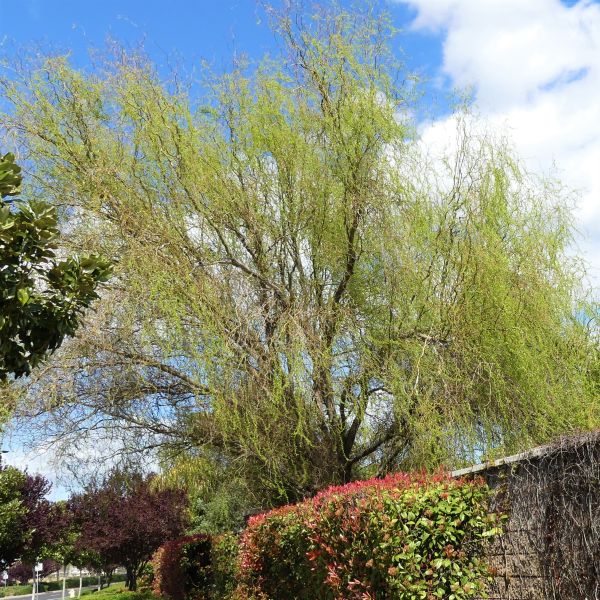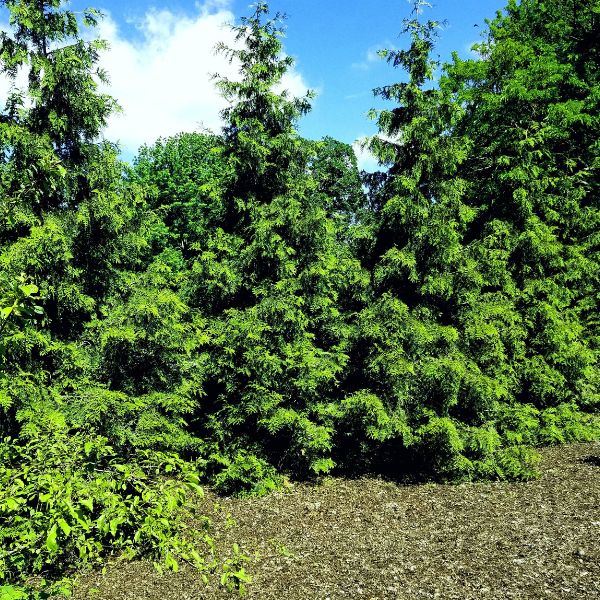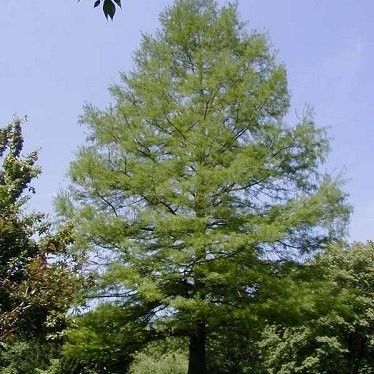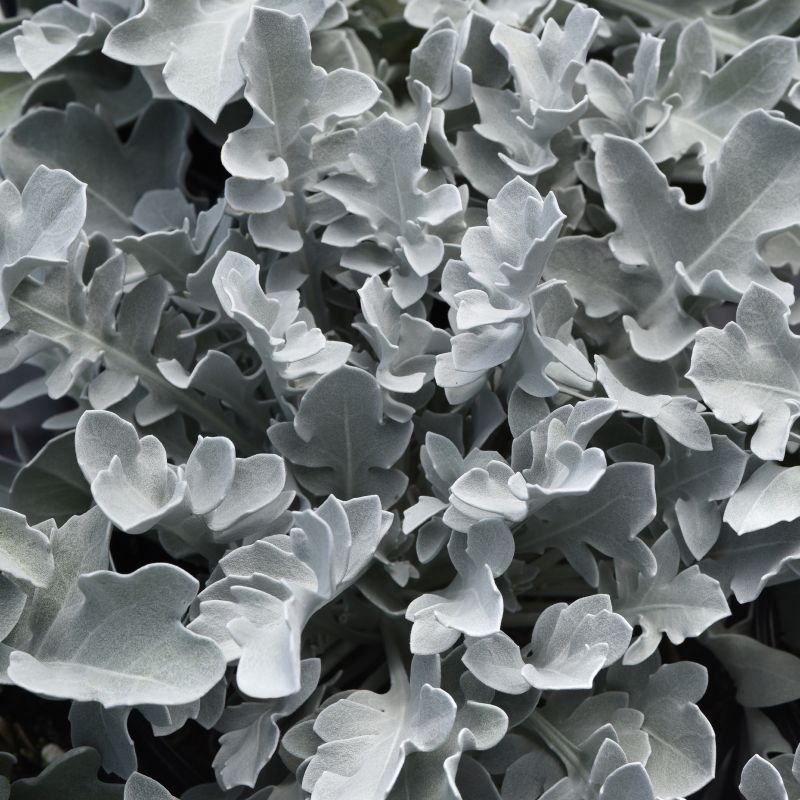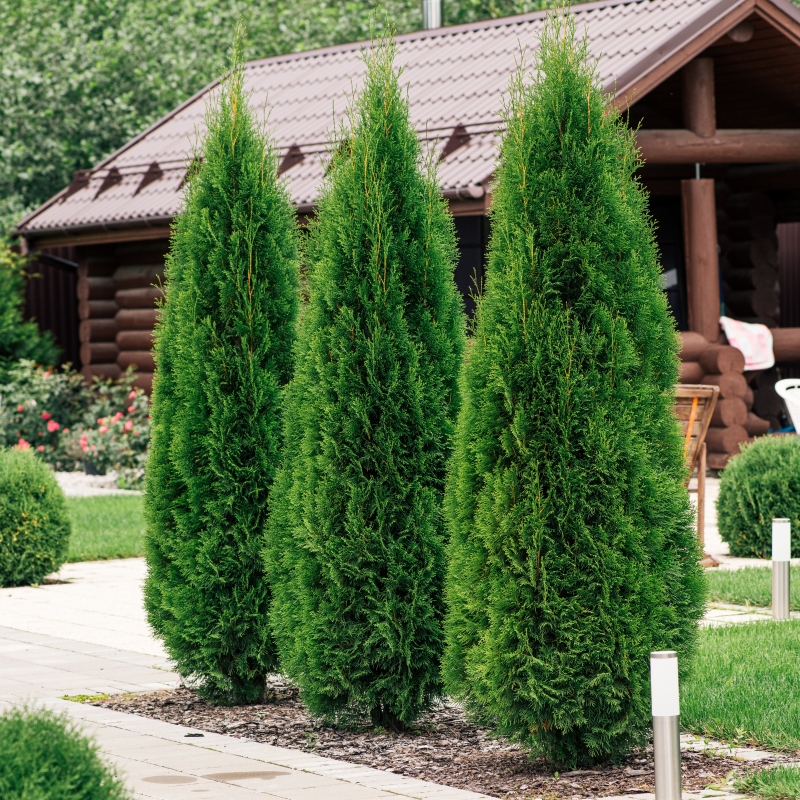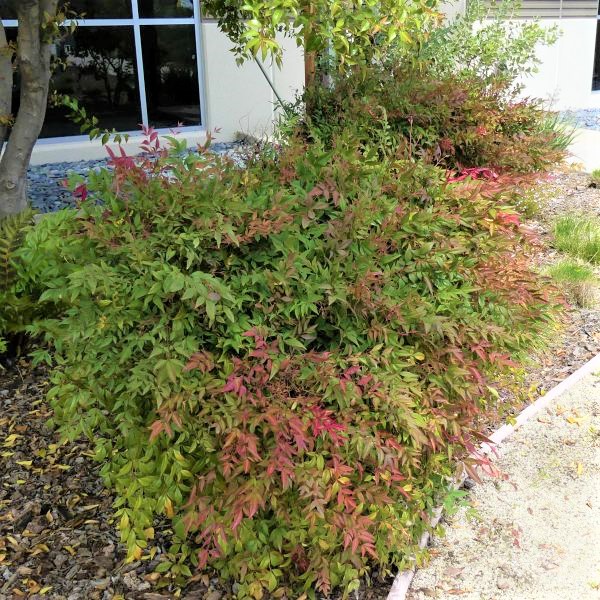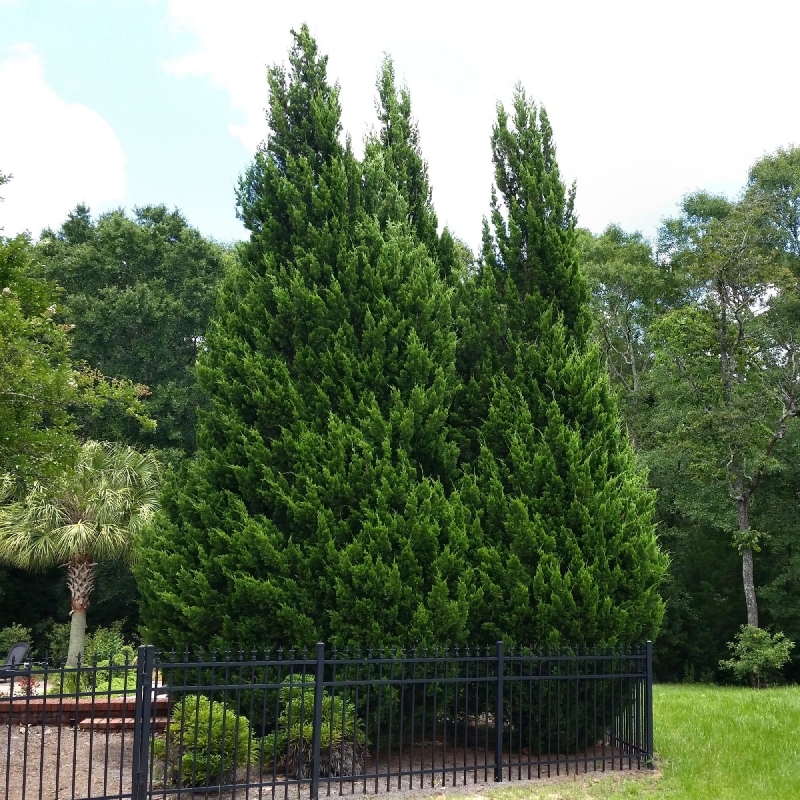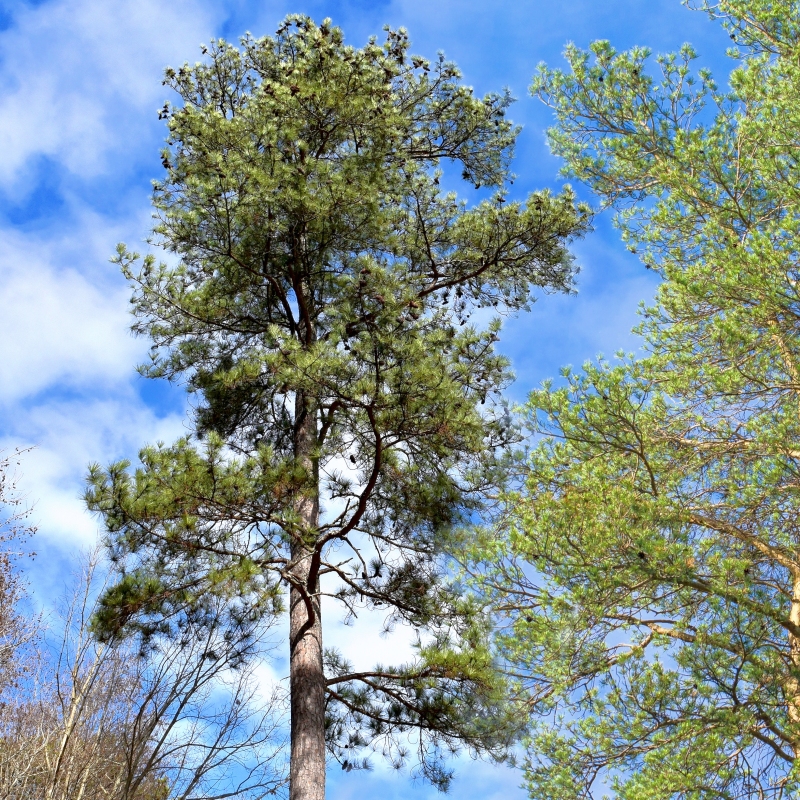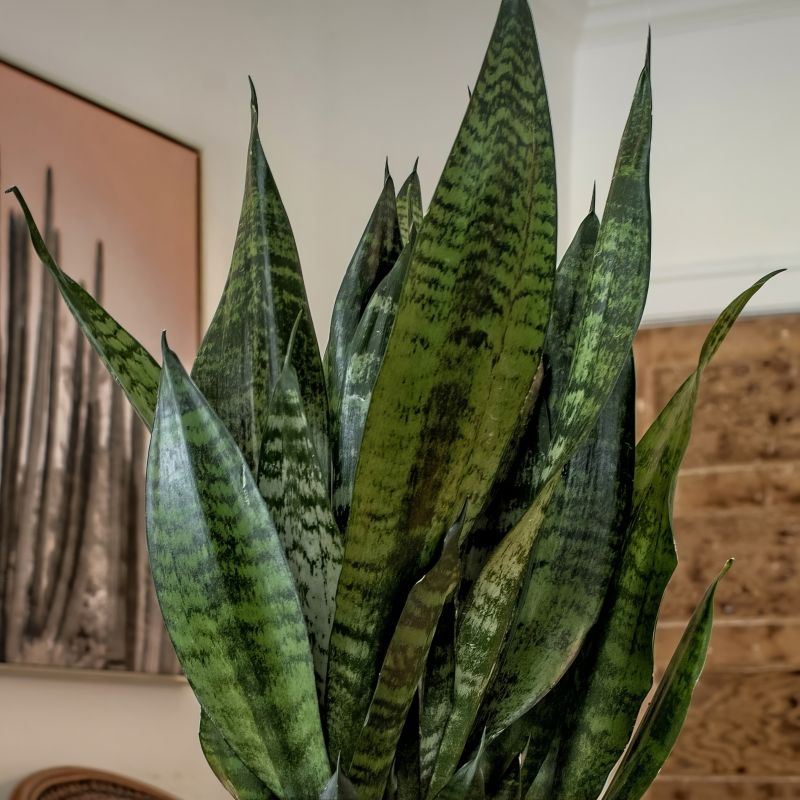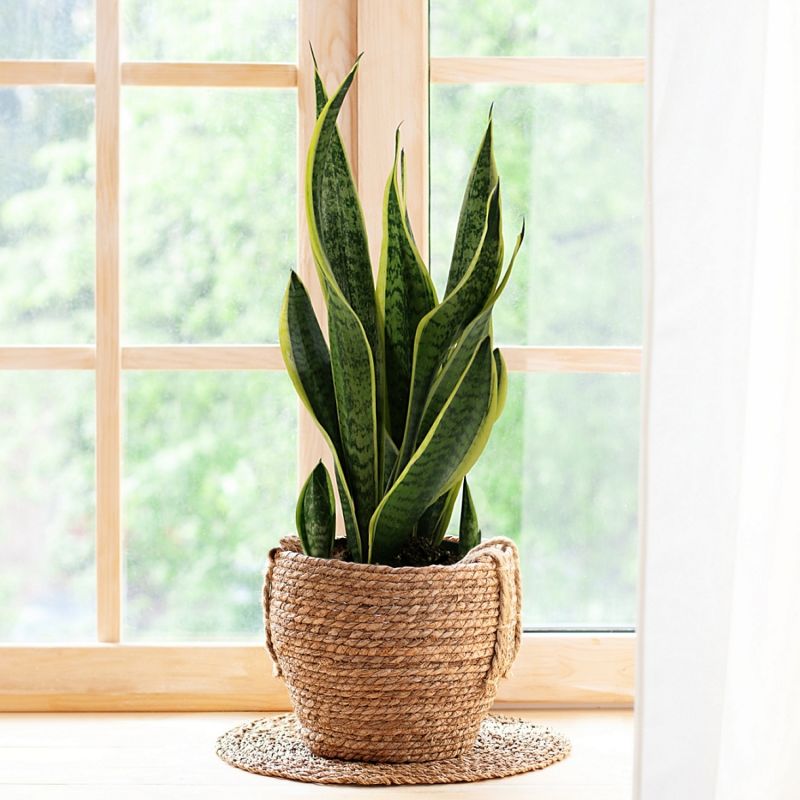

Corkscrew Willow
Salix matsudana 'Tortuosa'
18 reviews


Corkscrew Willow
Salix matsudana 'Tortuosa'
18 reviews
$115.00
$165.00
30% Off
- 2.5 Gallon 4-5 Feet
- 2.5 Gallon 3-4 Feet
We are sorry, product is currently out of stock due to seasonal availability. Please check the "Related plants available in your area" section below
Why Corkscrew Willow?
Corkscrew Willow, also known as Salix matsudana 'Tortuosa', is a unique and visually striking tree. Its distinctive feature is its twisted and contorted branches, hence the name "Corkscrew." This ornamental tree is popular among gardeners and landscapers for its eye-catching appearance and ability to add interest to any landscape. Its twisted branches create a whimsical and artistic element, making it an excellent choice for adding texture and charm to gardens or outdoor spaces.
Related plants available in your area
Sunlight
Corkscrew Willow trees require full sunlight exposure to thrive.
Watering
Corkscrew Willow trees require regular watering, especially during the initial stages of growth. They prefer consistently moist soil and should be watered deeply, providing enough water to saturate the root zone but avoiding excessive waterlogging.
Fertilizing
Corkscrew Willow requires a well-draining soil with high organic matter content. The ideal fertilizer requirement for this tree includes a balanced mix of nitrogen, phosphorous, and potassium to promote healthy growth and development.
Corkscrew Willow (Salix matsudana 'Tortuosa')
The Corkscrew Willow, scientifically known as Salix matsudana 'Tortuosa', is a deciduous tree native to China. It is commonly referred to as the Twisted Willow or Dragon's Claw due to its uniquely contorted branches, which appear like twisted ropes spiraling in all directions.
Key Features:
- The tree typically reaches a height of 20 to 40 feet, with a spread of 15 to 35 feet, making it an eye-catching focal point in any landscape.
- Its twisted and spiraling branches add visual interest to gardens, particularly during the winter months when it lacks leaves.
- The leaves of the Corkscrew Willow are long and narrow, ranging from dark green to grayish-green.
- In early spring, before the leaves emerge, the tree displays fluffy catkins, adding an appealing touch to its ornamental value.
- It thrives in moist to wet soil conditions and is often found near water bodies, but it can adapt to a wide range of soil types and grows well in full sun to partial shade.
Uses:
The Corkscrew Willow is primarily used as an ornamental tree in gardens and landscapes. Its contorted branches and unique form make it an aesthetically appealing choice for visual interest or as a centerpiece. Additionally, this tree can also be used for erosion control along riverbanks or to create natural privacy screens.
Care Instructions:
- Regular watering is essential, especially during the tree's establishment period. It is important to keep the soil consistently moist, but not waterlogged.
- Applying a layer of mulch around the base of the tree helps retain moisture and prevent weed growth.
- Pruning should be done in late winter to early spring, before new growth appears. The tree responds well to pruning and shaping, allowing for maintenance of its desired form.
- Although it can tolerate a range of soil types, a well-draining soil is preferable for optimum growth. Adding organic matter to the soil can help improve its overall quality.
The Corkscrew Willow is an intriguing tree that effortlessly adds a touch of whimsy and charm to any outdoor space. With its twisted branches and unique growth habit, it is sure to be a conversation starter and a standout feature in gardens, parks, or landscapes.
Plant Information:
| Botanical Name: | Salix matsudana 'Tortuosa' |
| USDA Zones: | 4-8 |
| Water: | Moderate to Low |
| Exposure: | Full Sun |
| Soil Needs: | Widely Adaptable |
| Mature Height: | 20 - 40 feet |
| Mature Spread: | 15 - 30 feet |






Pollination Info
Pollination Information for Corkscrew Willow (Salix matsudana 'Tortuosa')
Being a member of the willow family, the Corkscrew Willow (Salix matsudana 'Tortuosa') is dioecious, which means it has separate male and female trees. This tree requires cross-pollination between a male and a female tree in order to produce seeds.
Here are some important details regarding the pollination of Corkscrew Willow:
Male and Female Trees
Corkscrew Willow trees can be either male or female. Male trees produce catkins, which are cylindrical clusters of tiny flowers that release pollen. Female trees, on the other hand, produce shorter catkins with small, green flowers that contain ovaries.
Pollination Process
Pollination occurs when wind carries pollen from the male catkins to the female catkins. The small, lightweight pollen grains are dispersed by the wind and may travel short distances to reach the female flowers.
Timing
The timing of pollination is crucial for successful fertilization. Corkscrew Willow trees typically flower in early spring, before the leaves fully emerge. Male catkins appear earlier than female catkins, so it's important to have both male and female trees in close proximity to ensure efficient pollination.
Importance of Insects and Bees
While wind pollination is the primary method for Corkscrew Willow, some studies suggest that insects, especially bees, can enhance the pollination process. Bees visiting the catkins for nectar can inadvertently transfer pollen grains between male and female flowers, increasing the chances of successful fertilization.
Seed Production
After successful pollination, the female catkins develop into small green capsules containing numerous tiny seeds. These capsules eventually turn brown and split open, releasing the seeds. Seed dispersal may occur through wind or water.
Additional Considerations
- To maximize the chances of successful pollination, it is recommended to plant both male and female Corkscrew Willow trees in close proximity.
- Regular pruning and maintenance can help ensure a healthy tree and enhance the production of catkins for pollination.
FAQ
Corkscrew Willow (Salix matsudana 'Tortuosa') FAQ
1. What is a Corkscrew Willow tree?
A Corkscrew Willow tree, also known as Salix matsudana 'Tortuosa', is a deciduous tree native to China. It is a type of willow tree known for its twisted and contorted branches, hence the name "corkscrew."
2. How tall does a Corkscrew Willow tree grow?
A Corkscrew Willow tree can grow up to 30 feet tall on average. However, its size can vary depending on the growing conditions, climate, and pruning techniques used.
3. What are the unique features of a Corkscrew Willow tree?
The most distinctive feature of a Corkscrew Willow tree is its contorted, twisted, and spiraling branches, which give it a unique and eye-catching appearance. The branches are characteristically thick and grow in a twisted manner throughout the tree.
4. How fast does a Corkscrew Willow tree grow?
A Corkscrew Willow tree is known for its rapid growth rate. It can grow up to 3-6 feet per year under optimal growing conditions.
5. Are Corkscrew Willow trees suitable for small gardens?
No, Corkscrew Willow trees are not ideal for small gardens or confined spaces. Given their fast growth rate and potential size, they require a significant amount of space to thrive properly.
6. Where should I plant a Corkscrew Willow tree?
Corkscrew Willow trees prefer full sunlight but can tolerate partial shade. They need moist soil and can grow well near water sources like ponds, lakes, or riverbanks. Make sure there is enough space for the tree to expand its unique branches without obstruction.
7. How often should I water a Corkscrew Willow tree?
In general, Corkscrew Willow trees prefer moist soil. Therefore, it is necessary to water them regularly, especially during dry periods. However, make sure not to overwater, as excessive water can lead to root rot.
8. How do I prune a Corkscrew Willow tree?
Pruning a Corkscrew Willow tree is essential to maintain its desired shape and prevent overcrowding. It is best to prune during late winter or early spring while the tree is still dormant. Remove dead or damaged branches and trim away any unwanted growth to maintain its unique twisted appearance.
9. Are Corkscrew Willow trees prone to diseases or pests?
Corkscrew Willow trees are relatively hardy; however, they can be susceptible to some common diseases and pests like aphids, leaf spot, and canker diseases. Regular inspection and preventive measures can help keep these issues under control.
10. Can I propagate a Corkscrew Willow tree?
Yes, you can propagate Corkscrew Willow trees through hardwood cuttings. Take cuttings during late winter or early spring, dip the base in rooting hormone, and plant them in a well-draining soil mix. Keep the cuttings moist and provide them with indirect sunlight until they root and start growing.
Planting & Care
Planting and Care for Corkscrew Willow (Salix matsudana 'Tortuosa')
The Corkscrew Willow, also known as Salix matsudana 'Tortuosa', is a stunning deciduous tree with twisted and contorted branches. It adds a unique look to any landscape. Here are the planting and care instructions to help you grow a healthy Corkscrew Willow:
Planting:
- Choose a suitable location: Corkscrew Willow requires full sun to thrive. Select a spot in your garden that receives at least 6-8 hours of direct sunlight per day.
- Soil preparation: The tree prefers moist, well-draining soil. Prepare the planting hole by removing any weeds or grass and loosen the soil to ensure good drainage.
- Dig the hole: Dig a hole twice as wide and slightly deeper than the root ball of the tree.
- Planting the tree: Place the Corkscrew Willow into the hole, making sure the top of the root ball is level with or slightly above the surrounding soil. Backfill the hole with soil, gently firming it around the roots as you go.
- Watering: Give the tree a thorough watering immediately after planting to settle the soil and help the roots establish.
Care:
- Watering: Regular watering is crucial during the first year of growth to ensure the roots stay moist. Provide deep, thorough waterings whenever the top inch of soil feels dry. Reduce the frequency once the tree is established.
- Fertilization: Fertilize the Corkscrew Willow annually in early spring with a balanced slow-release fertilizer. Follow the instructions on the fertilizer packaging for dosage and application.
- Pruning: Pruning is usually not necessary for the Corkscrew Willow. However, if shaping is desired, it's best done during the winter dormant season. Remove any dead or damaged branches as needed.
- Mulching: Apply a layer of organic mulch around the base of the tree, keeping it away from the trunk. Mulching helps conserve moisture, suppress weeds, and insulate the soil.
- Pest and Disease Control: The Corkscrew Willow is generally resistant to pests and diseases. However, occasional infestations from aphids, caterpillars, and scale insects may occur. Treat with appropriate insecticides if necessary.
By following these planting and care instructions, you can enjoy a beautiful and healthy Corkscrew Willow in your garden.
Check Out These Verified Customer Reviews:
Customer Reviews
4.7 out of 5 based on 18 reviews
Thank you! Your review has been submitted.
Item exactly as described, very pleased.
I love the twisted branches of the Corkscrew Willow. The item was as described and arrived promptly.
The item arrived in perfect condition. It was well-packaged and the quality exceeded my expectations.
Item has been added to your cart.



